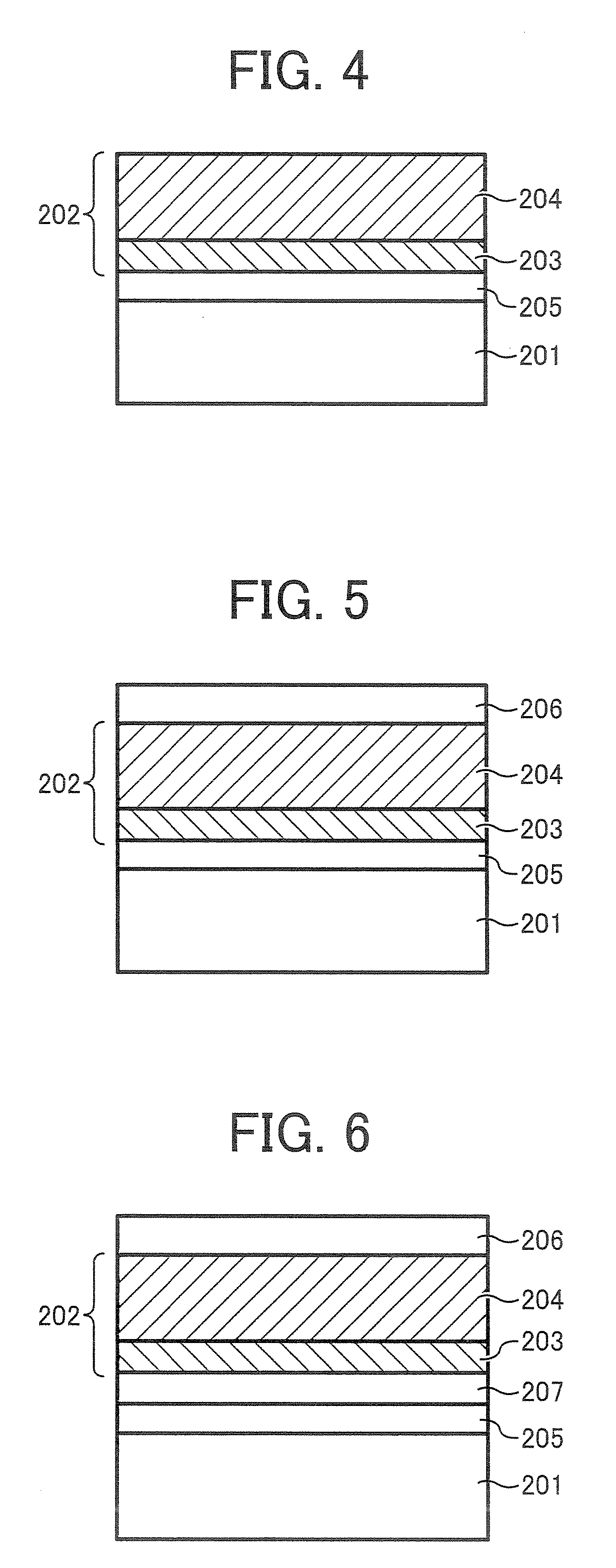Electrostatic latent image bearing member, and image forming apparatus, process cartridge, and image forming method using the same
a technology of electrostatic latent image and bearing member, which is applied in the direction of corona discharge, instruments, photosensitive materials, etc., can solve the problems of poor mechanical strength of organic photoreceptors, inability to perform proper image forming process, and abraded photosensitive layers of photoreceptors, etc., to achieve good abrasion resistance, electrophotographic properties, and good abrasion resistan
- Summary
- Abstract
- Description
- Claims
- Application Information
AI Technical Summary
Benefits of technology
Problems solved by technology
Method used
Image
Examples
synthesis example 1
Charge Transport Polyol Synthesis Example 1
Synthesis of diethyl 4-methoxybenzyl phosphonate
[0588] At first, 4-methoxybenzyl chloride is reacted with triethyl phosphite for 5 hours at 150° C. After the reaction, the excess triethyl phosphite and ethyl chloride (i.e., a by-product) are removed by distillation under reduced pressure. Thus, diethyl 4-methoxybenzyl phosphonate is prepared.
Synthesis of 4-methoxy-4′-(di-p-tolylamino)stilbene
[0589] Diethyl 4-methoxybenzyl phosphonate and equimolar amount of 4-methoxy-4′-(di-p-tolylamino)benzaldehyde are dissolved in N,N-dimethylformamide. Then potassium t-butoxide is gradually added thereto while water-cooling and agitating the mixture. The mixture is further agitated for 5 hours at room temperature, and then water is added thereto so as to make the mixture acidic. The crude objective material is precipitated therefrom. The crude objective material is purified with a column chromatography using silica gel. Thus, 4-methoxy-4′-(di-p-tolyla...
synthesis example 2
Charge Transport Polyol Synthesis Example 2
[0596] By following the same reaction path for preparing CTP-1, a hydroxybiphenylyl derivative is prepared. The hydroxybiphenylyl derivative is reacted with glycidyl methacrylate, and then subjected to alkali hydrolysis. Thus, a charge transport polyol (CTP-2) having the following formula is prepared.
synthesis example 3
Charge Transport Polyol Synthesis Example 3
[0597] By following the same reaction path for preparing CTP-1, a hydroxy α-phenylstilbene derivative is prepared. The hydroxy α-phenylstilbene derivative is reacted with glycidyl methacrylate, and then subjected to alkali hydrolysis. Thus, a charge transport polyol (CTP-3) having the following formula is prepared.
PUM
 Login to View More
Login to View More Abstract
Description
Claims
Application Information
 Login to View More
Login to View More - R&D
- Intellectual Property
- Life Sciences
- Materials
- Tech Scout
- Unparalleled Data Quality
- Higher Quality Content
- 60% Fewer Hallucinations
Browse by: Latest US Patents, China's latest patents, Technical Efficacy Thesaurus, Application Domain, Technology Topic, Popular Technical Reports.
© 2025 PatSnap. All rights reserved.Legal|Privacy policy|Modern Slavery Act Transparency Statement|Sitemap|About US| Contact US: help@patsnap.com



